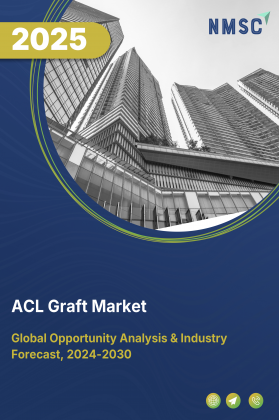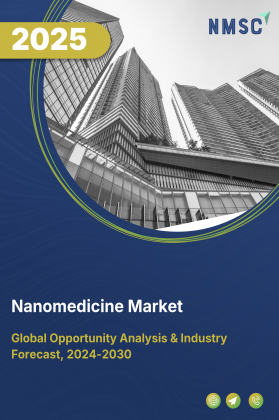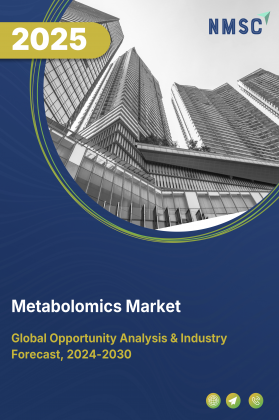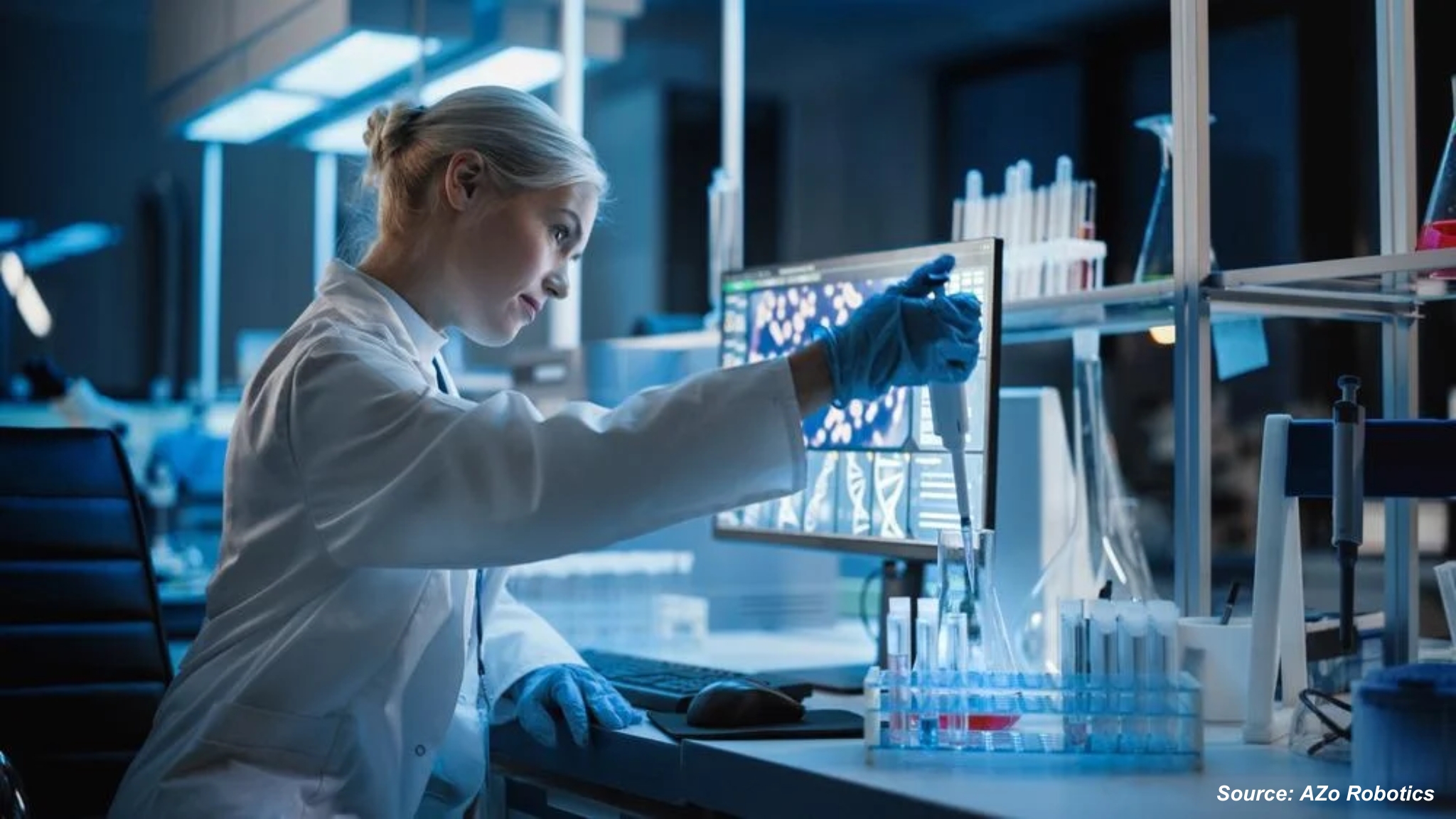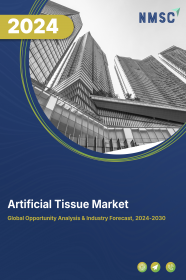
Artificial Tissue Market by Tissue Type (Bone Tissue, Skin Tissue, Adipose Tissue, Nerve Tissue, Cartilage Tissue, Liver Tissue and Other), by Material (Synthetic and Natural) and by Application (Skin Reconstruction, Adipose Regeneration, Cardiology & Vascular, Neurology, Urology, Orthopedics, Musculoskeletal & Spine, GI, Gynecology and Others)- Global Opportunity Analysis and Industry Forecast 2022-2030
Market Definition:
The global Artificial Tissue Market size was valued at USD XX billion in 2021 and is expected to reach USD XX billion by 2030 with a CAGR of XX% from 2022-2030. Artificial tissue is prepared in labs but exhibits property of a live tissue, thus it is used as a substitute of a natural tissue. Fabrication of artificial tissue is done with help of numerous bio-fabrication techniques. The main advantage associated with the deployment of artificial tissue is its ability to provide growth factor near the wound site, where it is planted. Artificial tissue is currently seen as a promising field of medical research and bio-technology.
With increasing popularity of artificial tissues embedded in artificial organs, demand for artificial tissue is expected to grow significantly during the forecast period, backed by advancing application of AI in medical sciences. This impressive growth rate is also facilitated by ascending application of 3D printing in healthcare industry. 3D bio-printing has made it possible to develop vascularized tissue, which are nearly 10-fold thicker and is composed of live human cells.
Market Dynamics and Trends:
A meteoric surge has been observed in the advancement of medical science with a blend of rising awareness with regards to organ transplantation. According to the data released by the U.S. government in September 2019, more than 1,20,000 patients are queued for organ transplantation and each 10 minutes a new patient is added to the list. This is likely to strengthen the demand for artificial tissue over the next decade.
Over the last half decade, 3D bio printing has made its space in organ and tissue transplantation and has proven to be crucial. This technology is massively utilized in the development of artificial tissue. 3D bio printing is gaining momentum due to its advantage of getting less rejection by human body. Further, integration of artificial intelligence in the fabrication of artificial tissue is poised to drive the growth trend of the market.
However, unprecedented event of Covid-19 has brutally impacted multiple sectors across multitude avenues resulting to flatten the global economy curve. Due to the pandemic, artificial tissue market has seen a moderate fall due to the increased involvement of medical facilities towards Covid patients and limited manufacturing capacity owing to lockdowns and social distancing measures. Further, the decision of patient to postpone the transplantation considering the spread of the virus at a global scale has restricted the growth of market.
Market Segmentations and Scope of the Study:
Artificial tissue market is segmented on the basis of tissue type, material, application and geography. On the basis of tissue type, the market is divided into bone tissue, skin tissue, adipose tissue, nerve tissue, cartilage tissue, liver tissue and other. On the basis of material, the market is classified into two types, synthetic and natural. Synthetic material is further sub-divided as TiO2 nanofiber, Poly (3-hydroxybutyrate-co-hydroxyvalerate) (PHBV) scaffold, Copolymer PEGylated fibrin (P-fibrin) gels, Poly (L-lactic acid) (PLLA) blend scaffolds and others. On the other hand, natural as source material is further divided as Decellularized human adipose tissue extracellular matrix (hDAM), Acellular cartilage matrices (ACMs), Liver decellularized extracellular matrix (DCM), Collagen, Matrigel and others. Furthermore, in terms of application market for artificial tissue is bifurcated as skin reconstruction, adipose regeneration, cardiology & vascular, neurology, urology, orthopedics, musculoskeletal, & spine, GI, gynecology and others. In terms of geography study talks about North America, Europe, Asia Pacific and RoW (Rest of world).
Geographical Analysis:
North America is expected to dominate global artificial tissue market throughout the forecast period (2022-2030). This is because the U.S. has the highest organ transplant demand in the world. In 2019, there was around 123 per million people, who undergo transplants. However, Europe is expected to gain higher traction than the global average. This is attributed to higher transplant rate in Spain and France, which are 117 and 90 per million people respectively. Also, greater number of old-age population and increasing expenditure towards skin and bone treatment would further pave path for skin tissue and bone tissue-based markets in the region.
On the other hand, Asia Pacific is seen as emerging market for artificial owing to increasing investment by key players and advancing demand from patients. China holds maximum amount of market share in Asia-Pacific region. This is attributed to increasing use of 3D bio-printing in healthcare domain.
Competitive Landscape:
The artificial tissue market is comprising of various market players such as Tissue Regenix Group plc, Baxter International, Inc., Integra LifeSciences Corporation, Allergen Plc., Zimmer Biomet Holdings, Inc., Becton, Dickinson and Company, Wright Medical Group, Taxus Cardium Pharmaceuticals, American CryoStem and Asterias Biotherapeutics. Key players in the market are focusing towards continuous product innovation, with investing higher amount in R&D activity.
For instance, university at Buffalo Research has introduced creating three-dimensional artificial tissue, with an objective of advancement that could improve experimental drug testing, the quality of artificial organs. Moreover, in September, 2020, Rice and the University of Washington (UW) have announced their initial investment strategy to remotely control cell functions of 3D build artificial tissues. These remote technologies will further help in controlling positioning and timing of the tissues.
Key Benefits:
-
The artificial tissue market report provides the quantitative analysis of the current market and estimations through 2022-2030 that assists in identifying the prevailing market opportunities to capitalize on.
-
The study comprises a deep dive analysis of the artificial tissue market trend including the current and future trends for depicting the prevalent investment pockets in the market.
-
The information related to key drivers, restraints and opportunities and their impact on the artificial tissue market is provided in the report.
-
The competitive analysis of the market players along with their market share in the artificial tissue market
-
The SWOT analysis and Porters Five Forces model is elaborated in the study.
-
Value chain analysis in the market study provides a clear picture of the stakeholders’ roles.
Artificial Tissue Market Key Segments:
By Tissue Type
-
Bone Tissue
-
Skin Tissue
-
Adipose Tissue
-
Nerve Tissue
-
Cartilage Tissue
-
Liver Tissue
-
Others
By Material
-
Synthetic
-
TiO2 Nanofiber
-
Poly (3-hydroxybutyrate-co-hydroxyvalerate) (PHBV) Scaffold
-
Copolymer PEGylated fibrin (P-fibrin) Gels
-
Poly (L-lactic acid) (PLLA) Blend Scaffolds
-
Others
-
-
Natural
-
Decellularized Human Adipose Tissue Extracellular Matrix (hDAM)
-
Acellular Cartilage Matrices (ACMs)
-
Liver Decellularized Extracellular Matrix (DCM)
-
Collagen
-
Matrigel
-
Others
-
By Application
-
Skin Reconstruction
-
Adipose Regeneration
-
Cardiology & Vascular
-
Neurology
-
Urology
-
Orthopedics
-
Musculoskeletal & Spine
-
GI
-
Gynecology
-
Others
By Geography
-
North America
-
U.S
-
Canada
-
Mexico
-
-
Europe
-
The U.K.
-
Germany
-
France
-
Italy
-
Spain
-
Denmark
-
Netherlands
-
Finland
-
Sweden
-
Norway
-
Russia
-
Rest of Europe
-
-
Asia-Pacific
-
China
-
Japan
-
India
-
South Korea
-
Australia
-
Indonesia
-
Singapore
-
Taiwan
-
Thailand
-
Rest of Asia-Pacific
-
-
RoW
-
UAE
-
Saudi Arabia
-
South Africa
-
Brazil
-
Remaining Countries
-
Key Players
-
Tissue Regenix Group
-
Baxter International, Inc.
-
Integra LifeSciences Corporation
-
Allergen Plc.
-
Zimmer Biomet Holdings, Inc.
-
Becton, Dickinson and Company
-
Wright Medical Group
-
Taxus Cardium Pharmaceuticals
-
American CryoStem
-
Asterias Biotherapeutics
REPORT SCOPE AND SEGMENTATION:
|
Parameters |
Details |
|
Analysis Period |
2021–2030 |
|
Base Year Considered |
2021 |
|
Forecast Period |
2022–2030 |
|
Market Size Estimation |
Billion (USD) |
|
Market Segmentation |
By Tissue Type (Bone Tissue, Skin Tissue, Adipose Tissue, Nerve Tissue, Cartilage Tissue, Liver Tissue and Other), by Material (Synthetic and Natural) and by Application (Skin Reconstruction, Adipose Regeneration, Cardiology & Vascular, Neurology, Urology, Orthopedics, Musculoskeletal & Spine, GI, Gynecology and Others) |
|
Countries Covered |
28 |
|
Companies Profiled |
Tissue Regenix Group plc, Baxter International, Inc., Integra LifeSciences Corporation, Allergen Plc., Zimmer Biomet Holdings, Inc., Becton, Dickinson and Company, Wright Medical Group, Taxus Cardium Pharmaceuticals, American CryoStem and Asterias Biotherapeutics. |

















 Speak to Our Analyst
Speak to Our Analyst



